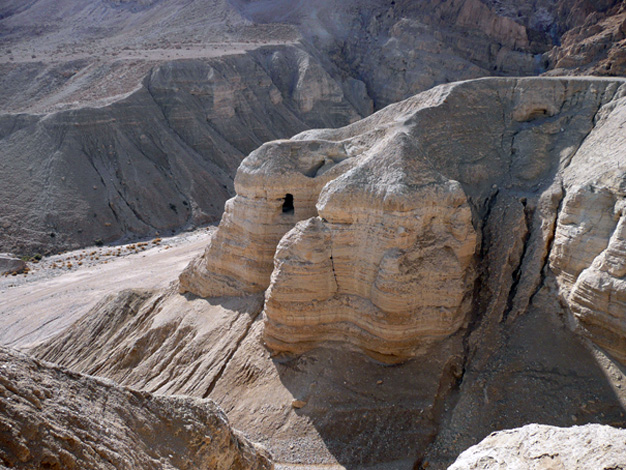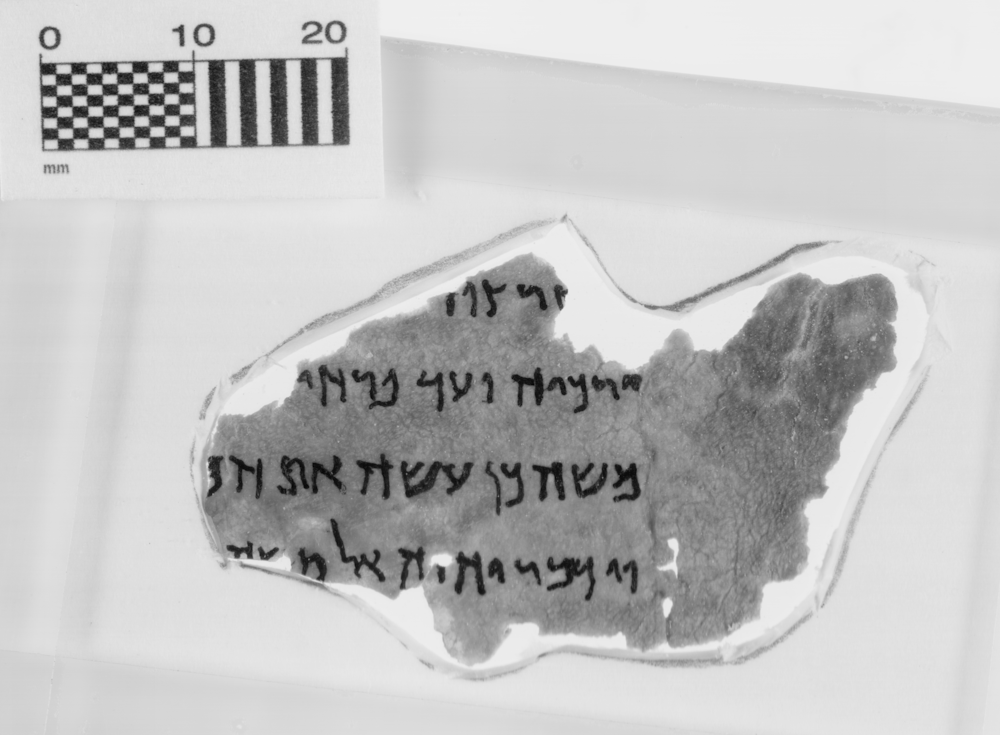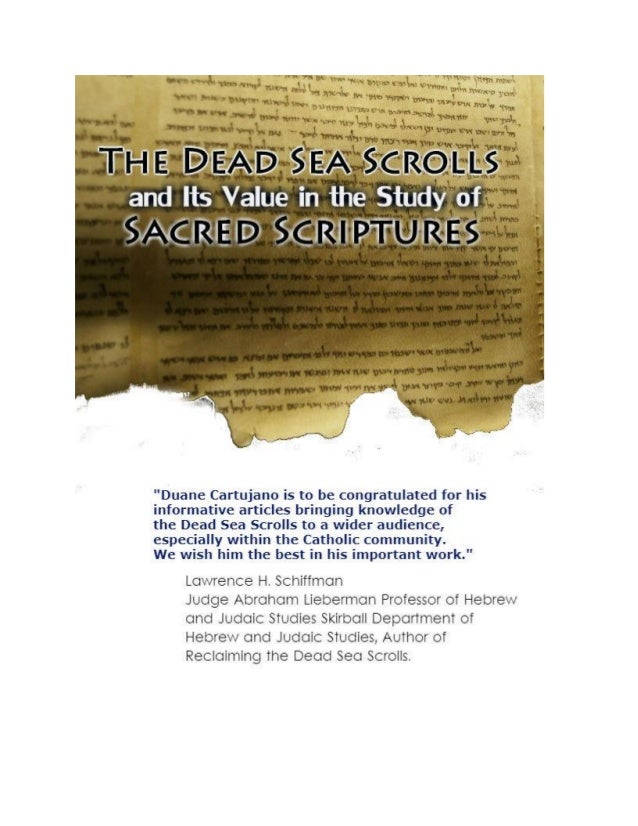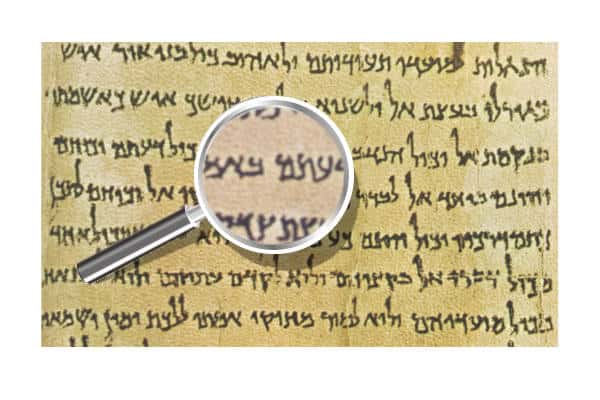- Dead Sea Scrollsrejected Scriptures God
- Dead Sea Scrolls Bible Accuracy
- Dead Sea Scrolls Verses
- Dead Sea Scrollsrejected Scriptures Blessings
Manuscript Types
The Leon Levy Dead Sea Scrolls Digital Library offers an exceptional encounter with antiquity. Using the world's most advanced imaging technology, the Digital Library preserves thousands of scroll fragments, including the oldest known copies of biblical texts, now accessible to the public for the first time. Bible verses about The Dead Sea Scrolls. Matthew 24:1-51 ESV / 2 helpful votes Helpful Not Helpful. Jesus left the temple and was going away, when his disciples came to point out to him the buildings of the temple. The Leon Levy Dead Sea Scrolls Digital Library offers an exceptional encounter with antiquity. Using the world's most advanced imaging technology, the Digital Library preserves thousands of scroll fragments, including the oldest known copies of biblical texts, now accessible to the public for the first time. The Dead Sea Scrolls (also the Qumran Caves Scrolls) are ancient Jewish religious manuscripts that were found in the Qumran Caves in the Judaean Desert, near Ein Feshkha on the northern shore of the Dead Sea in the West Bank.Scholarly consensus dates these scrolls from the last three centuries BCE and the first century CE. The texts have great historical, religious, and linguistic significance.
The majority of the Dead Sea Scrolls are religious works, divided on thiswebsite into 'Biblical' and 'Non-Biblical' compositions, with a specialcategory for 'Tefillin and Mezuzot'. The non-literary records in the corpus(mostly papyrus manuscripts from sites other than the Qumran caves) are groupedinto 'Documents' and 'Letters', and a small number of 'Scribal Exercises'. The'Unidentified Texts' are tiny fragments in such poor condition that they cannotbe categorized. There are also 'Multiple Compositions'. In most cases, amanuscript label refers to a single text. However, sometimes a single label wasassigned to more then one composition. In some cases, this is due to the re-useof a scroll in antiquity-- when writing was superimposed over existing text (apalimpsest) or there are separate texts written on the two sides of a scroll(recto and verso). Other cases of 'multiple compositions' with a single labelmanuscript number reflect modern errors and disagreements about classifyingfragments.
Occasionally, scholars mistakenly thought that different fragments came fromthe same manuscript and grouped them together. Sometimes the fragments are thesame composition, e.g., the book of Leviticus, but originate from differentcopies. In such cases, the texts are given an extra letter to distinguish them,such as 4Q26, 4Q26a, 4Q26b, 4Q26c, which represent different copies ofLeviticus that were placed together.

Composition Types
The literary compositions among the Dead Sea Scrolls are conventionallycategorized according to their content or genre. Scholars differ in theiropinions about specific categories and labels, and the terms used here aredesigned to help the user navigate this unique site rather than to contributeto the on-going and complicated scholarly debates. One text can have more thanone label describing it.
Biblical Compositions


Scripture (מקרא) – These manuscripts contain material now consideredto be part of the Hebrew Bible. Every book is represented among the Dead SeaScrolls, except the book of Esther. These are the oldest known copies ofbiblical works.
Translation of Scripture (תרגום מקרא) – These are translations ofscriptural texts into Aramaic and Greek.
tefillin and mezuzot
Tefillin ('phylacteries') and Mezuzot are ritual objects, small slips of parchment containing excerpts of biblical texts in keeping with
Deut 6:6-9:
6And these words, which I command you this day, shall be upon your heart…8 you shall bind them for a sign upon your hand, and they shall be for frontlets between your eyes.. 9And thou shall write them upon the door-posts of your house, and upon your gates.
Tefillin (תפילין) - These parchment slips, folded and placed incapsules, are understood to be the 'frontlets between your eyes.' About twodozen tefillin slips were recovered from the Qumran caves, and additionaltefillin were found at Wadi Murabba'at, Nahal Hever, and Nahal Se’elim.
They are identified by the biblical passages they contain, and some specialscribal features such as tiny script. The texts are the same as those requiredby later rabbinic halakha that has been passed down to modern Jewish practice,but some contain additional biblical passages. Since the Qumran tefillin arethe only examples we have from the Second Temple period, we cannot know whethertheir distinctive features reflect the traditions of a specific community orwhether they represent a more widespread tradition.Mezuzot (מזוזה) - These are placed on doorposts of houses. Eightmezuzot were found in the Qumran caves, and one was discovered at WadiMurabba'at. The biblical passages on the mezuzot often include the same textsthat appear on doorposts of Jewish homes today.
Non-Biblical Compositions
Non-biblical compositions refer to texts that are not considered part of themodern Hebrew Bible. Some may have been considered sacred by their contemporarywriters and readers.
Apocrypha (אפוקריפה) – The term 'Apocrypha' is used here to refer tothe specific collection of books considered to be canonical in the Catholic andEastern Orthodox traditions, but not part of the Hebrew Bible or Protestantcanon. Three works of the Apocrypha are found among the Dead Sea Scrolls: BenSira (also known as the Wisdom of Ben Sira, Sirach, or Ecclesiasticus), thebook of Tobit, and the Epistle of Jeremiah.
Calendrical Texts (חיבורים קלנדריים) – 'Calendrical texts' found inthe Qumran caves rely mainly on solar rather than lunar calculations. Thecalendars are useful sources of information about festivals and priestlycourses (mishmarot). The cryptic script (a type of unusual Hebrew writing) ofsome of the calendars may imply that the information was secret and esoteric.These manuscripts are especially valued for their orderly and systematic listsof days and months, enabling scholars to recreate missing pieces of thecalendar. The most prominent calendar consists of 364 days divided into 4seasons of 13 weeks each.
Exegetical Texts (חיבורים פרשניים) – The term 'Exegetical texts' usedhere refers to texts that analyze and interpret biblical works through explicitreference. The most well-known of these texts are the pesharim; others includea 'halakhic midrash' and commentaries on Genesis.
Pesher (פשר) – This type of exegetical literature applies biblicalprophecy to the history and experience of the sectarian community known as theYahad, with a special focus upon the End of Days. These commentaries are easilyrecognized by the use of the word pesher in the written formulas that link thecitation of the biblical text to its interpretation.
Historical Texts (חיבורים היסטוריים) – Historical texts relate tohistorical events; some of these works feature moral and theologicalinterpretations of the events. These fragments mention historical people suchas Queen Salome and Greek kings, and many of the events described are set inthe midst of war and rebellion.
Legal Texts (חיבורים הלכתיים) – Legal texts (also referred to ashalakha, a term used in later rabbinic texts), deal with matters of religiouslaw. Biblical legal texts cover a broad range of subjects including: civilmatters; ritual requirements such as festivals, Temple service and physicalpurity; ethical behaviors; and more. Many Qumran texts interpret and expandupon biblical laws. 'Rules' texts like the Community Rule, or portions of theDamascus Document, deal specifically with sectarian rules and regulations. Embassy pdf. Somelegal texts, most notably Miqsat Ma'aseh haTorah (MMT, also known as theHalakhic Letter), reflect polemics with opposing groups.
Parabiblical Texts (חיבורים על המקרא) – The term 'Parabiblical texts'is used here to refer to texts that relate to scriptural works by re-telling,expanding upon, or embellishing biblical stories or legal texts. Examples arethe Genesis Apocryphon, Enoch, and the Temple Scroll. Some books categorized asparabiblical, e.g., Jubilees or the Aramaic Levi Document, may have been givenscriptural status by certain groups in ancient times.
Poetical/Liturgical Texts (חיבורים שיריים וליטורגיים) – Most of thepoems and hymns among the Dead Sea Scrolls are closely related to biblicalpoetry. Many also incorporate themes and expressions from later periods, mostnotably sectarian hymns such as the Hodayot. Some texts would have been usedfor personal study or reflection, while others were intended for more formalliturgical use, such as Daily Prayers and Festival Prayers, and the Songs ofthe Sabbath Sacrifice.
Sapiential Texts (חיבורים חכמתיים) – Among the Dead Sea Scrolls areworks that continue the sapiential, or wisdom traditions, found in the biblicalbooks of Proverbs, Job, Ecclesiastes and some Psalms, and in the Apocryphalworks of Ben Sira and the Wisdom of Solomon. These works offer practical adviceabout daily life, alongside intellectual inquiry about the world and humanity.Qumran Scrolls wisdom texts, such as Instruction and Mysteries, combine thepractical and intellectual themes with apocalyptic concerns, and occasionallyrelate to legal matters as well.
Dead Sea Scrollsrejected Scriptures God
Sectarian Texts (חיבורים כיתתיים) – The 'Sectarian texts' use uniqueterminology to describe the special theology, worldview, and history of aparticular group, which called itself the Yahad ('Community'). The core textsoutline the rules and regulations of the Yahad and emphasize the End of Days,which the Community viewed as imminent. Scholars used to attribute all of theQumran Scrolls to the Essenes, one of the three major Jewish sects in theSecond Temple period. Most now agree that the corpus represents the writings ofrelated, evolving communities rather than a single sect. Even the texts labeledas sectarian were likely to have been composed by multiple groups, within andoutside of the Community. Three of the original seven scrolls found in Cave 1near Qumran were instrumental in identifying sectarian texts and remain some ofthe most well-known manuscripts: the Community Rule (Serekh HaYahad), theScroll of the War of the Sons of Light Against the Sons of Darkness, and theHabakkuk Commentary (Pesher Habakkuk).
Documents and Letters
Bar Kokhba Letters (איגרות בר כוכבא) – Fifteen military letters werefound stored in a leather waterskin in Cave 5/6 of Nahal Hever, known as the Cave of theLetters. All of the letters in this bundle were written by men who wereinvolved with the administration of Shim‘on b. Kosiba, the leader of the BarKokhba Revolt, and most were written in Shim‘on’s name.
Archive of Babatha (ארכיון בבתא) – The personal archive of Babatha,apparently a refugee during the Bar Kokhba Revolt, was found in Cave 5/6 ofNahal Hever, known as the Cave of theLetters. These thirty-five financial documents, including marriagecontracts, land deeds, and bills of sale, had been wrapped in a package storedinside a leather purse and placed in a concealed crevice inside the cave,presumably for safekeeping for future retrieval. Most of the Babatha documentsare well preserved and feature explicit dates, ranging from 94-132 ce. The archive includes documents written in Aramaic, Nabatean and Greek
Archive of Eleazar ben Shmuel (ארכיון אלעזר בן שמואל) – In additionto the Bar Kokhba and Babatha archives, the Cave of theLetters also yielded another small collection of documents. Five contractsbelonging to Eleazar the son of Shmuel, a farmer from Ein Gedi, were foundinside a leather purse concealed in a crevice alongside the Babatha archive. Anadditional papyrus document belonging to Eleazar was found hidden inside areed.
Alleged Qumran Documents (תעודות לכאורה ממערות קומראן) – Some of thedocuments sold by Bedouin to the Rockefeller Museum were attributed to Qumrancaves but may actually have been found elsewhere. In at least one of thesecases, a Qumran Cave origin does in fact seem likely. One fragment is anaccount in Greek that was probably written on the back of a Qumran Scroll.
Discovery
East of the city of Jerusalem, the mountainous landscape plummetsdramatically 1200 meters to the lowest pointon earth, the Dead Sea. Some of the most dramatic biblical stories are set inthe rocky caves of this region, between the Judean hills and the Dead Sea.Here, in the intense heat of the barren Judean Desert, we can visualize Davidfleeing from King Saul seeking refuge in the desert’s mountain caves, andJesus rejecting the temptations of the devil. For thousands of years theJudean Desert held secrets buried in its sands, only to be revealed by ayoung Bedouin shepherd in 1947. Thediscovery of these ancient treasures initiated a modern-day adventure intothe past, revolutionizing our understanding of history and religion.

As the story goes, a shepherd of the Ta'amireh tribe left his flock of sheepand goats to search for a stray. Amid the crumbling limestone cliffs that linethe northwestern rim of the Dead Sea, around the site of Qumran, he found acave in the crevice of a steep rocky hillside. Intrigued, he cast a stone intothe dark interior, only to be startled by the sound of breaking pots. Thissound echoed around the world. For he had stumbled on the greatest find of thecentury, the Dead Sea Scrolls. Upon entering the cave, the young Bedouinfound a mysteriouscollection of large clay jars. The majority were empty and upon examining theremaining few, he found that the jars were intact, with lids still in place.However, a closer look revealed nothing but old scrolls, some wrapped in linenand blackened with age.
He and several companions brought the scrolls to Kando, a Bethlehemantiquities dealer, for appraisal. Intrigued by the findings, Kando sent theBedouin back to the caves in search of more treasures. To his delight, theyreturned with a total of seven scrolls. Blind to their real value, the Bedouinsold four of the seven scrolls to Kando and three to a second antiquitiesdealer named Salahi. Kando then resold the four scrolls to Archbishop Samuel,head of the Syrian Orthodox Monastery of St. Mark in Jerusalem.
When Hebrew University Professor Eliezer Lipa Sukenik caught wind of theScrolls’ discovery through an Armenian antiquities dealer, he set out toinvestigate the significance of the finds. Braving Arab-Jewish tensions, hetravelled to meet the Armenian dealer at the British divided military zone ofthe Jerusalem border. In this clandestine meeting, the dealer held up afragment of leather for the professor to examine. As Sukenik peered throughthe wire, he recognized the ancient writing.
Eager to see more, Sukenik travelled with the dealer to Bethlehem to seeSalahi, who was in the possession of three Scrolls. Opening the Scrolls, he wasamazed to see Hebrew manuscripts, one thousand years older then any existingbiblical text. In his diary, Sukenik recollected:
“ My hands shook as I started to unwrap one of them. I read a few sentences. It was written in beautiful biblical Hebrew. The language was like that of the Psalms, but the text was unknown to me. I looked and looked, and I suddenly had the feeling that I was privileged by destiny to gaze upon a Hebrew Scroll which had not been read for more than 2,000 years. ”
Dead Sea Scrolls Bible Accuracy
The First Seven Scrolls
Sukenik acquires and publishes selections of three Scrolls: The War Scroll, theThanksgiving Scroll (Hodayot), and a second copy of Isaiah. The fourth of the St. Marks's Monastery Scrolls, which could not be opened at the time, was later found to be an Aramaic work re-writing portions of the book of Genesis and was named Genesis Apocryphon.
1949: Regional turmoil leads Syrian Archbishop Samuel to smuggle hisprecious four Scrolls out of the country, relocating them to a Syrian Church inNew Jersey.
1954: Samuel places the same four Scrolls up for sale in a WallStreet Journal advertisement. Yigael Yadin, son of Professor Sukenik, purchasesthe four Scrolls through an American middleman, on behalf of the State ofIsrael.
1955: Yadin joins the four Scrolls with the three already located atthe Hebrew University
1965: The 'Shrine of the Book' is built to house these sevenScrolls.
Aftermath of Initial Discovery
When word spread that these seven Scrolls contained biblical texts andother ancient religious writings, it opened the way for a series of similarfinds in ten other nearby caves over the next nine years. This vast manuscripttreasury, known as the 'Dead Sea Scrolls', includes a small number ofnear-complete Scrolls and tens of thousands of Scroll fragments, representingover 900 different texts written in Hebrew, Aramaic and Greek.
Excavation over the years has extended outside the Qumran area, south alongthe western shore of the Dead Sea, from the caves of Wadi Murabba'at and NahalHever to Masada. Additional Scroll fragments have been discovered at numeroussites. Today, all of these Judean Desert manuscripts are collectively known asthe Dead Sea Scrolls.
1949- 1956Roland De Vaux, Director of École Biblique etArchéologique Française in East Jerusalem and Gerald Lankester Harding, BritishDirector of the Department of Antiquities of Jordan (DAJ), led the archaeologyteam surveying the area.
Dead Sea Scrolls Verses
News of the discovery sent archaeologists, as well as Bedouin treasure hunters,racing to excavate the area where the first Scrolls were found. Overall, theydiscovered thousands of Scroll fragments within10 additional caves—in total the remains of over900 manuscripts.
Yet it was the Bedouinwho discovered the majority bounty, the richest treasures of the caves. In Cave4 alone, dug out of the sheer face of an escarpment, thousands of fragmentsfrom about 500 different Scrolls were found. DeVaux and Harding negotiated with the Bedouin to purchase the Scrolls they hadfound. In 1953, Harding and De Vaux appointed an international team ofscholars to begin the publication of the Scrolls. As the team began their workat the Rockefeller Museum, piecing together the fragments of over 900manuscripts, a complex historical puzzle emerged.
Dead Sea Scrollsrejected Scriptures Blessings
Publication
For the first 40 years after their discovery,the study of the thousands of text fragments was monopolized by fewer then adozen international scholars, all great experts in their respective fields.This limited team size prevented the speedy publication of the texts. In theearly 1990s, the Israel Antiquities Authority (IAA) took major steps to advancethe publication of the Dead Sea Scrolls. Hebrew University Professor EmanuelTov was nominated as chief editor and the publication was divided among about100 international scholars; by 2001, themajority of the official editions had been published and were located inacademic libraries.
At the same time, concern for the Scrolls’ physical condition led the IAA toestablish a conservation lab dedicated solely to the conservation andpreservation of the Scrolls.
